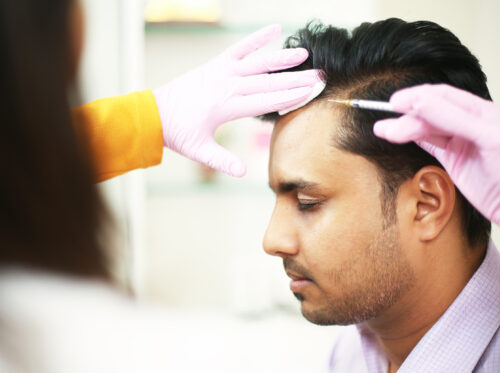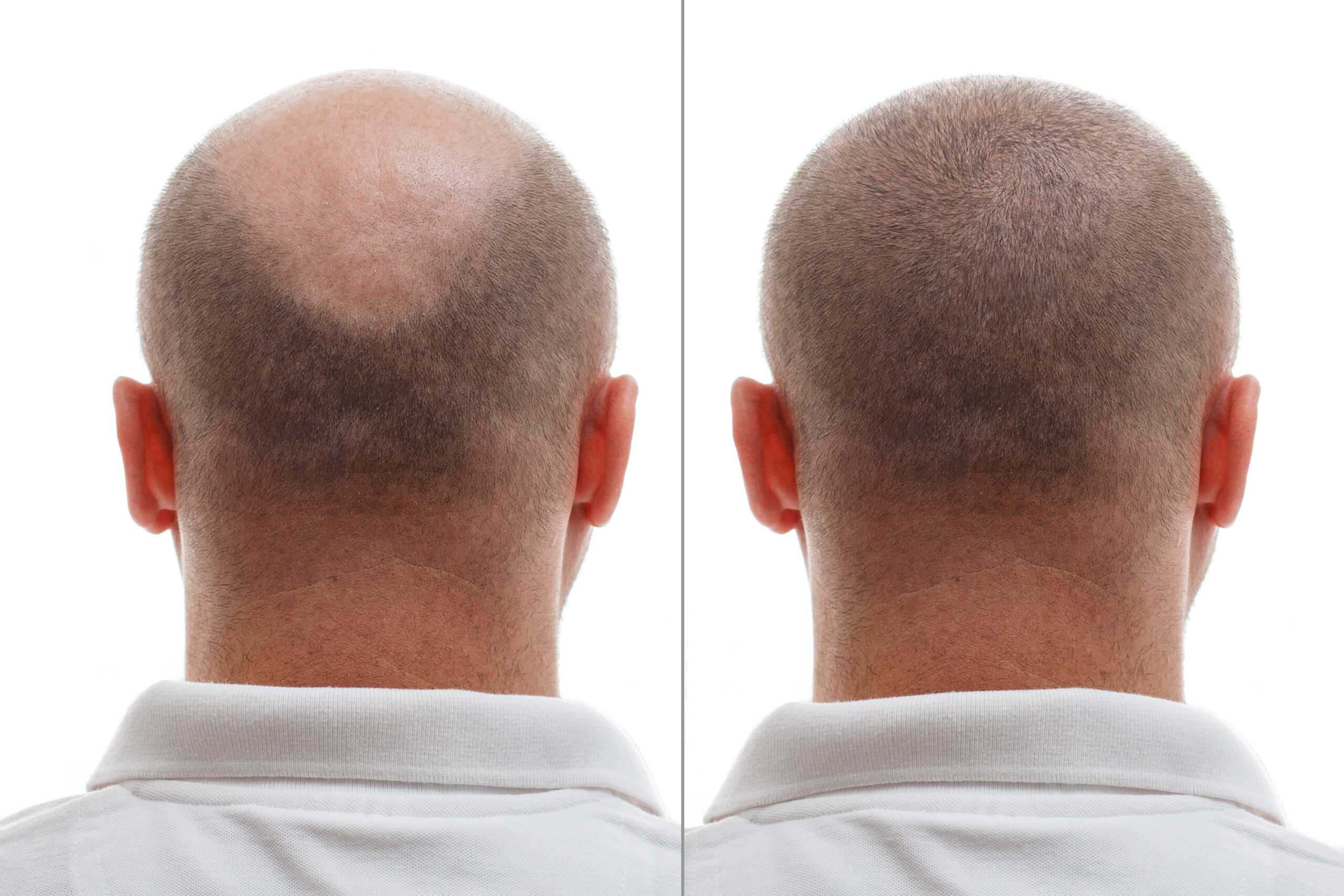Hair Restoration
Home > Services
Growth factor concentrate : Does the cure for hair loss lie within our blood?
Most research on PRP for hair loss has focused on its use to treat androgenetic alopecia (AGA). Also known as hormone-related baldness, this is a condition that can affect both men and women. In men with AGA, hair loss typically occurs on the top and front of the head. In women, thinning occurs on the top and crown of the head and often begins with the central hair part growing wider.
Hair loss from male-pattern baldness (also known as androgenic alopecia) is primarily due to genetics, making it unpreventable for those who are predisposed. Fortunately, there are things you could do to slow down this process and enjoy your hair for much longer. Treating male-pattern baldness has been made possible thanks to science-backed treatments that stimulate the hair follicle and control damage.

GFC for hair loss is a treatment utilising a biological product prepared from the patient’s own blood. Platelets present in blood contains growth factors (such as TGF-beta, PDGF-AB, bFGF, IGF, VEGF and EGF) and bioactive proteins (globulin, albumin, fibrinogen), nutrients, vitamins, hormones and electrolytes which speed up tissue repair and regeneration.
A small quantity of the patient’s own blood is collected and then treated in a centrifuge to separate the platelet-rich-plasma from the red blood cells. The plasma is then injected in a grid pattern into the scalp. Treatment takes around one hour.
A course of treatment involves 4 sessions of PRP with one set of injections each month, over a 4 month period.
GFC for hair loss is a safe treatment with no risk of infectious disease transmission as it is prepared in closed circuit from the patient’s own blood (autologous product). As PRP is prepared from the patient's own blood, adverse reactions are rare. Patients may experience slight redness because of needle pricks.
Patients are advised not to wash their hair or scalp for 24 hours following treatment.
GFC is a much better treatment than PRP and can be seen as a development in plasma therapy. Although both procedures are performed with patients’ blood, they have variations but GFC reports better results. Depending on the severity of the condition, 4-6 GFC sessions are required for long-term results, while PRP requires 8-10 sessions
The Aesthetic world is the one-stop destination, offering advanced hair loss solutions. We specialise in giving great results, using the combination technique of FUE & FUT, which very centres in the world are using. It's the most advanced form of hair transplant treatment and technique that has proven to be highly effective compared to other procedures. If you are dealing with baldness, thinning of hair, hair loss, or alopecia, our experts can offer personalised solutions after a detailed study and assessment of your problem. You can benefit from the best treatments for hair replacement/ transplant from our team of experienced professionals.
FUE- Direct is new advancement in hair restorative procedures, performed with hi-tech manual, motorised equipment and instrumentation, using exclusive skill and technique for maximum harvesting of grafts, without deforming their physical condition and anatomical structure, in a shortest possible time.

FUE-Direct technique also requires exclusive protocols and management to prevent extracted grafts from dehydration, swelling, mishandling, splitting and delayed placing into recipient sites, (post harvesting protocols) therefore, to help achieve optimum results.
FUT- Follicular unit transplant provides a good number of transplantable hair in comparison to FUE. Using combination therapy always gives better results as compared to single technique.
The most crucial and vital aspect of the technique is associated with placing of grafts, at the right time and at the right place, besides, controlling the angle, depth and the distance between the grafts. At The Aesthetic World, each surgery procedure is undertaken professionally and all the vital steps are carried out by the surgeon himself, along with a team of skilled surgical assistants who, finally, contribute to excellent quality results.
Several factors can cause Gynecomastia,
Although anyone above 18 can get a hair transplant, undergoing this procedure at such a young age is generally not recommended. Most hair surgeons recommend that you must be at least 25 years old to get a hair transplant. The primary reason for this age restriction is that the pattern for hair loss usually remains undetermined before 25. A hair transplant works best when the surgeon can track your balding pattern.
The procedure uses grafts extracted from the back of the head. This area of the scalp usually has hair follicles that are DHT immune. It is worth mentioning that DHT is a hormone responsible for hair loss. With DHT immune hair grafts in the treated region, you can expect transplant results to last for a lifetime.
People with alopecia areata or significantly less hair on the donor area are generally not good candidates for this procedure. Individuals who usually qualify for a hair transplant are the ones with androgenetic alopecia.
Although minimally invasive, a hair transplant falls into the category of surgical procedures. Therefore, expect some numbness, swelling, and scalp discoloration for a few days after this procedure. These side effects are a normal part of the recovery process and not a cause of concern.
Copyright © 2023 The Aesthetic World. Design By Help Together Group